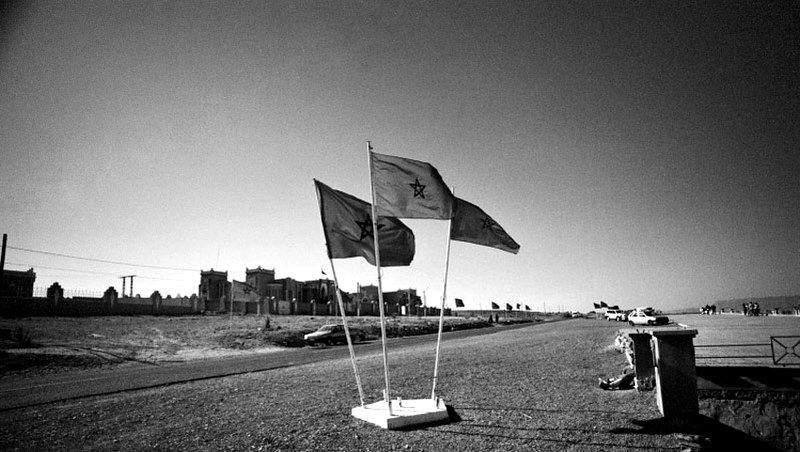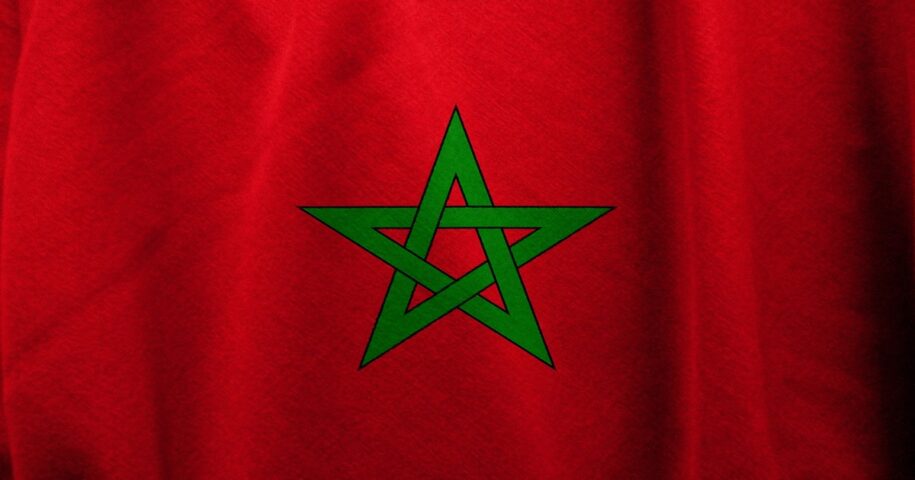During the twentieth century, while Morocco was under the dominion of France and Spain, native flag traditions were curtailed and even banned entirely. On November 17, 1915, the French made a change to the basic red flag that had been flown by Moroccan ships throughout the war with France. The ancient pentagram is known as the Seal, or Pentacle, of Solomon, was placed in the center of the design. In ancient societies, it was used in a variety of ways over a broad range of geographical and theological locations, and its implications were substantially different from those of the five-pointed star on current flags, which was initially popularized by the United States. After Morocco gained its independence from France in 1956, the green pentagram on a red field was retained as the country’s national flag.
Moroccan flag meaning:
- The crimson background color of the Moroccan flag means the connection that exists between God and the nation it represents. In Morocco, the color red is a representation of power, courage, bravery, and tenacity.
- The green color of the interwoven pentagram depicts the seal of Solomon, which serves as a symbol of the connection of the Moroccan flag with Islamic culture.
- The star represents knowledge, longevity, and good health.
Each of the five peaks of the Moroccan flag’s star has a symbolic value; they are connected to the five pillars of Islam, upon which the life of a Muslim is built, and they are associated with the five responsibilities that every Muslim is required to do.
The 5 star Peaks mean:
1. Certificate or testimony:
It is the expression of religious belief. There is only one genuine God, and Muhammad is His messenger, according to the Arabic phrase “la Ilaha illa Allah, Muhammad Rasul Allah,” which translates as “There is only one true God, and Muhammad is Allah’s messenger.” This is considered to be one of the most significant pillars of the religious system. The meaning is that a Muslim is declared by two witnesses and must also forsake idolatry and polytheism in order to be recognized as a member of the Muslim faith.
2. Prayer:
In addition to prayer, the other point of the star on the Moroccan flag is represented by a crescent moon. There should be a direct line of communication between the individual and Allah, with no need for any middlemen. The believer is required to offer five daily prayers, in order to commemorate Solomon’s vow of obedience and surrender before God. These prayers must be offered by a person who is well-versed in the Qur’an and who has been selected by the whole community to lead them. These prayers may be conducted within mosques or in other locations, but they must always be directed toward Mecca.
3. Alms:
In the Moroccan flag, this point represents the country’s commitment to assisting the less fortunate. Each believer’s capital is worth 2.5 percent of his or her yearly income, and this assistance is provided to the poorest and most destitute among us.
4. Fasting:
Morocco’s flag is also used as a sign of fasting during the month of Ramadan, which occurs in the ninth month of the lunar calendar. This fasting is a unique act of self-purification that fosters empathy for those who are suffering from hunger while also aiding in the development of self-control. During this fast, Muslims are not permitted to eat, drink, or engage in sexual activity. The fast is broken at sunset, so believing families awaken before the sun and have their first meal.
5. Pilgrimage
The pilgrimage to Mecca is represented by the final point of the star on the Moroccan national flag. Moreover, all Muslims who are physically and financially capable of participating in this pilgrimage have a responsibility to do so. In Mecca, the Irham is worn, which is little more than a white two-piece garment; the goal is to eliminate any distinctions between believers based on their social class in this manner.
The history of the Moroccan national flag:

The original Moroccan flag, which belonged to the Idrisid dynasty, often known as the founders of the state, was hoisted in 788. It was the first flag to be flown in Morocco. This flag was nothing more than a blank white field.
It is difficult to trace the origins of the Moroccan flag’s history because of the many debates about the date of its inception, the identity of its designer, and the early interpretation of its symbolism.
In reality, it is thought that the star on the Moroccan national flag had six points rather than the five points it has today in the initial edition of the flag.
When Morocco was under the Spanish and French administration, the red flag could only be flown inside the country’s borders; it was prohibited from being flown at sea.
The Moroccan flag is now totally red, with a green five-pointed star in the center, as it was in the past. This star was put on the Moroccan flag by royal order in 1915, and it has served as the country’s official symbol ever since.
When national holidays arrive and the country is bustling with tourists, the Moroccan flag may be seen flying in public buildings and even on the streets.
Other flags of Morocco:
Other forms of the Moroccan flag are the civil and naval insignia.
The civilian insignia is very similar to the official flag of Morocco, but with the addition of a yellow crown and a star of the same color in the upper left corner;
The naval flag is similar to the civil flag, but also includes a yellow crown and a star on each of its equines.
Some flags also used in Morocco are:
White flags. These flags were used in battles. They were made of white silk and each unit of 100 soldiers carried one with them. The leaders of the units carried a white flag with the inscription: “There is no god but God and Mohammed is his prophet”;
Royal Guard. The Moroccan flag of the Royal Guard is green in color and bears a yellow five-pointed star in the center, as well as a crescent moon and a white star at each of the corners;
If there is one thing we are sure of that distinguishes Morocco, it is its great history, not only of the Moroccan flag but of every corner of the country. We cannot leave aside the warmth of its inhabitants.


Leave a Reply